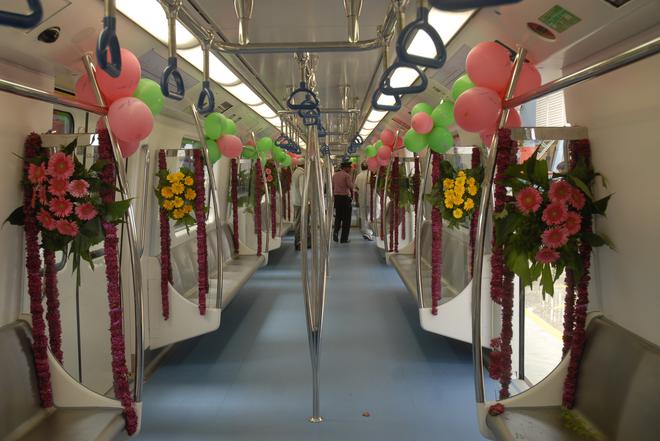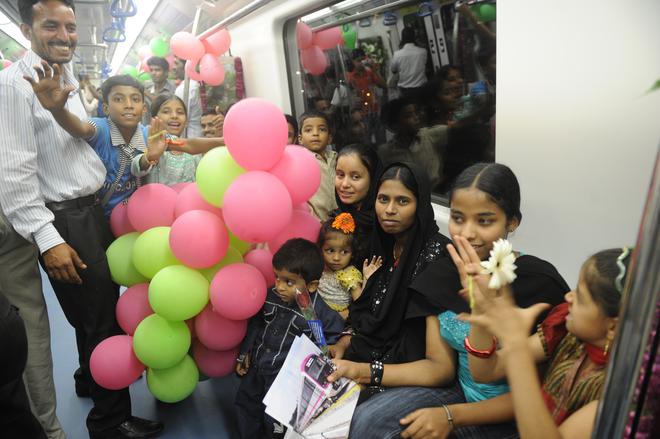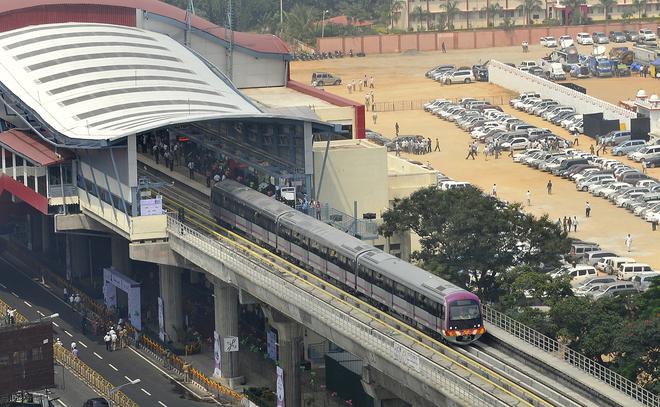On Friday, Namma metro completes its 12th anniversary since the inauguration of its first operational stretch in 2011, Reach 1, connecting M.G. Road to Baiyappanahalli. This marked a significant moment in the city’s public transport history then, as it represented the commencement of the first mass rapid transit system.

The operation of Namma Metro, which had been conceptualised nearly two decades prior to its launch, marked a pivotal step forward in Bengaluru’s transportation infrastructure.
Currently, the city metro stands as India’s second longest operational metro network, spanning 73.81 kilometres, following the Delhi Metro.
It also marked a historic moment as it became South India’s inaugural underground metro station.

Recently, Bangalore Metro Rail Corporation Limited (BMRCL) initiated operations for the entire 43.49 km stretch of the Purple Line, connecting Challaghatta in the west to Whitefield in the east.
Delays and missed deadlines
However, South India’s first metro rail faced numerous challenges, including delays and missed deadlines. These setbacks have inconvenienced the public for several years, especially given the city’s existing congestion issues compounded by ongoing metro construction.

Srinivas Alavilli, a public transport advocate, said: “Despite the numerous missed deadlines during the construction of the metro line, it is crucial to recognise the challenges faced in developing such significant public infrastructure in a rapidly growing city. Bengaluru, being a 500-year-old city, presents unique challenges in urban development, especially given its rapid expansion.”
Learn from the past and focus on the future
Mr. Alavilli said that it’s essential to acknowledge that there could have been more thoughtful planning. “Certain priorities seemed misplaced; for instance, constructing a flyover in places like Electronics City or Bengaluru airport road before the metro raises questions. Metro construction should have taken precedence in these areas,” he said.

“BMRCL encountered numerous challenges on its journey, but it’s imperative to learn from the past and focus on the future. Mistakes are natural, but repeating them is not acceptable. BMRCL must ensure it moves forward without repeating these errors. Hopefully, in the future, the metro will be accessible within a one-kilometer radius of everyone’s office,” he added.
Land acquisitions and PILs primary obstacles
Officials from BMRCL said that challenges related to land acquisitions and public interest litigations (PILs) have been the primary obstacles. Difficulties in acquiring land from private individuals, the Forest Department, and other authorities have led to delays in the metro construction.

An official from BMRCL told The Hindu, “Initially, when the metro work began, many people protested against tree cutting. However, now they are among metro commuters. As the city expands, we require vital infrastructure like the metro for seamless connectivity, benefiting all commuters. Delays in our progress were primarily due to PILs filed against BMRCL regarding tree felling. Additionally, obstacles in land acquisition and timely handover to contractors also contributed to the delays”.
PM Modi to officially to dedicate two stretches of east-west corridor
Days after the Baiyappanahalli to Krishnarajapura and the Kengeri to Challaghatta metro stretches were opened for public use, Prime Minister Narendra Modi will formally dedicate these two metro stretches to the nation on Friday online.
These two stretches were opened for public service from October 9.







